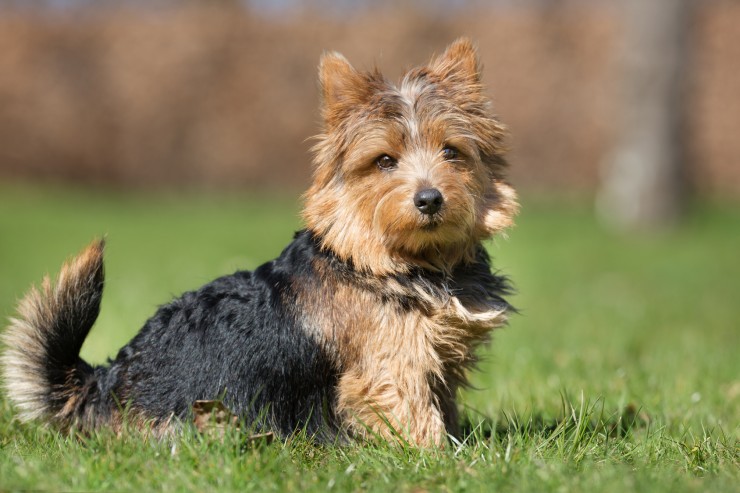
Tired of your dog dragging you out the door and down the street?
Are YOU the one that needs a nap after taking the dog for a
walk? Maybe it’s time to leash train the dog. A little time and
a bit more patience can provide a lifelong reward – enjoyable
outdoor walks with your dog. But before getting started, let’s
review a few basic training principles.
It is best train in an area that the dog is already familiar
with, such as the back yard. Dogs have a natural tendency to
explore, and things will go easier if they are not tempted by
this desire. Reward good behavior with praise and treats – the
treats can be lessened over time and you will find the dog is
more than satisfied with just the praise. Keep the sessions
short at first, and fairly often. Also, try to do the training
at the same time everyday – this gives the dog an easy routine
to follow. Remember to correct, not punish the dog while leash
training. Punishment is only used when the dog does not behave
as they have been taught, and they have not been taught how to
walk on a leash yet. And don’t forget that you are learning, too!
A good collar and leash are necessities. A six-foot leather
leash is ideal for training. An extensible leash is probably not
a good idea for training purposes. They tend to keep a slight
tension on the leash, and you want to teach the dog to walk near
your side with the leash slightly loose (but not dragging). For
puppies, use a regular buckle collar. If you are training an
older dog, or one that tends to pull against the leash, then try
a training collar. These allow you to tighten or loosen them
around the neck to control pulling on the leash.
Now that you have everything ready, it’s time to start training.
The first two or three sessions can be used simply to allow the
dog to get used to the collar. Have the dog sit beside you while
you put the leash on. Then let them roam around a little,
dragging the leash. This lets them get used to the leash without
having to worry about anything else. Try picking the leash up,
and when it is about to tighten, give it a slight tug and call
the dog to you. After the dog comes to your side, give them a
treat and praise them. Repeat this a few times. Next time when
you put the leash on and the dog starts walking away, call them
back to your side and have them stand there for a bit. They will
probably wander a little, but that’s ok – just keep an eye on
the leash, and when it is about to tighten, give a little tug
and call them back to your side. Don’t forget the reward and the
praise. Your goal is to get the dog used to standing by your
side with a loose leash.
After doing only this for a few sessions, you are ready to start
walking. After putting the leash on and having the dog come
stand beside you, try walking a little ways. Keep your eye on
the dog, and if the leash starts to tighten, give it a slight
tug and call the dog to your side. You might also try changing
directions or simply stopping. If you do this before the leash
gets tight, the dog will soon learn that you want the leash to
remain loose. The dog will also learn that you want them to pay
attention to what you are doing and follow your lead.
Whenever you feel the dog is doing well with this, then it’s
time to venture into the real world. Try shorter walks at first,
and lengthen them as you both get more comfortable with the
leash. If the dog is not cooperating then put an end to the
walk. Don’t reward their bad behavior by simply extending the
walk and hoping they will improve. Let the dog explore their
surroundings, but keep calling them back to your side. Over
time, this behavior will become natural for both of you. Then
YOU can look forward to the walks just as much as your dog!
 Make Some Good New Year’s Resolutions For Your Dog
Make Some Good Ne
Make Some Good New Year’s Resolutions For Your Dog
Make Some Good Ne
 Interesting Facts About Rabbits
Interesting Facts
Interesting Facts About Rabbits
Interesting Facts
 Buying A Puppy - The Most Important Questions To Ask The Breeder
Buying A Puppy -
Buying A Puppy - The Most Important Questions To Ask The Breeder
Buying A Puppy -
 Is A Dogue De Bordeaux The Right Dog For You?
Is A Dogue De Bor
Is A Dogue De Bordeaux The Right Dog For You?
Is A Dogue De Bor
 Yorkshire Terriers And Hypoglycemia
Yorkshire Terrier
Yorkshire Terriers And Hypoglycemia
Yorkshire Terrier
Copyright © 2005-2016 Pet Information All Rights Reserved
Contact us: www162date@outlook.com